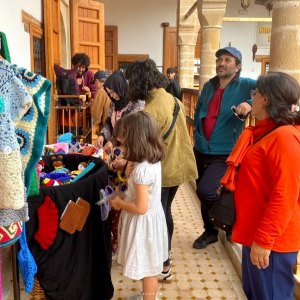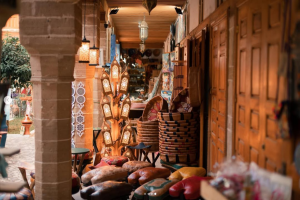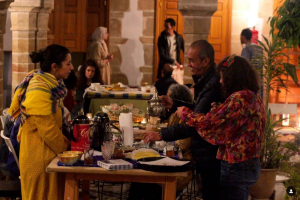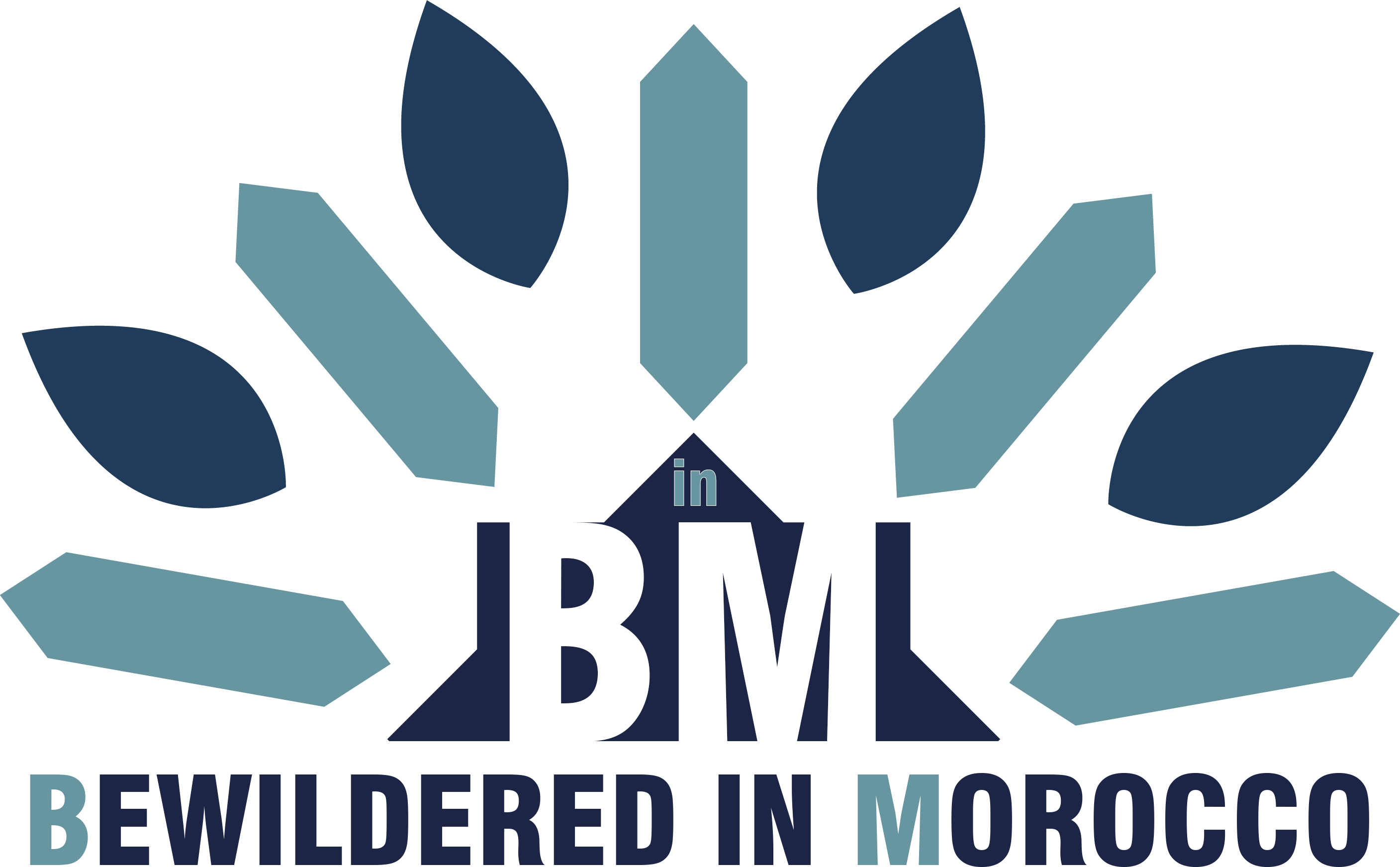Have you ever walked past an ancient building and wondered about the stories held within its walls? That's exactly how I felt when I first encountered Fondouk Ben Aïcha, a hidden architectural treasure nestled in the heart of Rabat that has captured my imagination.
A Journey Through Time
Standing proudly on the western bank of the Bouregreg River, along the historic Consuls Street where diplomats and politicians once strolled, Fondouk Ben Aïcha whispers tales of Morocco's rich past. This remarkable 17th-century building, constructed during the reign of Moulay Ismail, began its journey as a traditional merchant inn, offering shelter to trading caravans that once crisscrossed the kingdom.
Architectural Marvel with an Andalusian Touch

What strikes you first about Fondouk Ben Aïcha is its stunning architecture – a beautiful fusion of local Moroccan craftsmanship and Moorish-Andalusian influences. The building spans two floors, with an intermediate corridor that once housed the merchants' animals and cargo. Today, as you walk through its restored passages, you can almost hear the echoes of ancient trade negotiations and the bustle of caravan life.
From Merchant Inn to Artisan Haven



While the original purpose of Fondouk Ben Aïcha was to shelter traveling merchants, today it serves as a vibrant hub for traditional Moroccan craftsmen. I had the pleasure of meeting some of these amazing artisans who now call the Fondouk their workshop.
One such craftsman is Abdul Habib El Maadi, a septuagenarian leather craftsman who has spent decades perfecting his art within these historic walls. With pride gleaming in his eyes, he shared that the building's history spans nearly four centuries, originally commissioned by a diplomat's wife.
A Tale of Two Names
Interestingly, the Fondouk holds a secret in its name. While officially known as Fondouk Ben Aïcha, many locals refer to it as Fondouk Benissa. Mohamed El Kaz, a visual artist who recently joined the Fondouk's artistic community, explained that while Ben Aïcha was the original patron, Benissa was a renowned craftsman who left such an indelible mark on the place that his name became synonymous with the building.
Renaissance of a Historical Gem
The Fondouk's journey hasn't always been smooth sailing. After years of neglect, this architectural masterpiece began to crumble, threatening to take its rich history with it. Thankfully, government intervention saved this cultural treasure through careful restoration work. The traditional craftsmen temporarily relocated to Dar Sanaa (House of Crafts) in Rabat during the four-year renovation period, ensuring their artistic traditions remained unbroken.
The Diplomatic Connection
Perhaps the most intriguing aspect of Fondouk Ben Aïcha is its connection to one of Morocco's historical diplomatic figures. The namesake Ben Aïcha was actually a fascinating character who excelled in two seemingly contradictory fields: maritime warfare and diplomacy. According to issue 146 of "Daawat Al-Haq" magazine, he was so successful in his diplomatic missions that he amassed considerable wealth upon his return to Rabat.
Visiting Today
Today, Fondouk Ben Aïcha stands as one of Rabat's most distinctive landmarks, managed by the Ministry of Islamic Affairs and Endowments. As Abdullah Lashkar, one of the young craftsmen who grew up near the Fondouk, told me, "Before the restoration, people were hesitant to visit, and tourists didn't even know it existed. Now, it's become one of Rabat's most distinctive attractions."
Experience It Yourself
If you're planning to visit Rabat, I highly recommend adding Fondouk Ben Aïcha to your itinerary. Not only will you get to admire its stunning architecture, but you'll also have the chance to meet talented artisans and perhaps take home a piece of Moroccan craftsmanship. The building is more than just a historical monument – it's a living testament to Morocco's rich cultural heritage and its ability to preserve traditions while embracing the present.
Practical Tips:
- Location: Eastern side of Consuls Street, near the Bouregreg River
- Best Time to Visit: During artisan working hours to see craftsmen at work
- Don't Forget: Your camera – the architectural details are stunning
- Pro Tip: Take time to chat with the artisans; their stories are as fascinating as the building itself
Have you visited any historical buildings that left a lasting impression on you? I'd love to hear about your experiences in the comments below!
